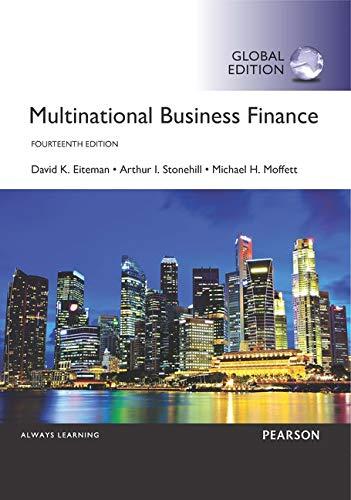We lived a long time with Elan (ELN). We always appreciated its science and scientists, and, at
Question:
We lived a long time with Elan (ELN). We always appreciated its science and scientists, and, at times, we hated its former management, or whoever caused it to turn from ascending towards becoming a citadel of sciences, especially neurosciences, into an almost bankrupt firm with less everything valuable in it than what was necessary for its survival. What saved it at the time was the emergence of Tysabri, for multiple sclerosis, which we knew it was second to none in treatment of relapsing remitting multiple sclerosis. We were certain that this drug, like Aaron’s cane, would swallow up all magicians’ staffs.
—“Biogen Idec Pays Elan \($3.25\) Billion for Tysabri:
Do We Leave, Or Stay?,” Seeking Alpha, February 6, 2013.
Elan’s shareholders (Elan Corporation, NYSE: ELN) were faced with a difficult choice. Elan’s management had made four proposals to shareholders in an attempt to defend itself against a hostile takeover from Royalty Pharma (U.S.), a privately held company. If shareholders voted in favor of any of the four initiatives, it would kill Royalty Pharma’s offer. That would allow Elan to stay independent and remain under the control of a management team that had not sparked confidence in recent years. All votes had to be filed by midnight June 16, 2013.
The Players Elan Corporation was a global biopharmaceutical company headquartered in Dublin, Ireland. Elan focused on the discovery, development and marketing of therapeutic products in neurology including Alzheimer’s disease and Parkinson’s disease and autoimmune diseases such as multiple sclerosis and Crohn’s disease. But over time the company had spun-out, sold-off, or closed most of its business activities. By the spring of 2013, Elan was a company of only two assets: a large pile of cash and a perpetual royalty stream on a leading therapeutic for multiple sclerosis called Tysabri, which it had co-developed with Biogen.
The solution to Elan’s problem was the sale of its interest in Tysabri to its partner Biogen. In February 2013 Elan sold its 50% rights in Tysabri to Biogen in return for \($3.29\) billion in cash and a perpetual royalty stream on Tysabri.
Whereas previously Elan earned returns on only its 50%
share of Tysabri, the royalty agreement was based on 100%
of the asset. The royalty was a step-up rate structure on worldwide sales of 12% in year 1, 18% all subsequent years, plus 25% on all global sales above \($2\) billion.
The ink had barely dried on Elan’s sale agreement in February 2013 when it was approached by a private U.S.
firm, Royalty Pharma, about the possible purchase of Elan for \($11\) per share. Elan acknowledged the proposal publicly, and stated it would consider the proposal along with other strategic options.
Royalty Pharma (RP) is a privately held company (owned by private equity interests) that acquires royalty interests in marketed or late-stage pharmaceutical products.
Its business allows the owners of these intellectual products to monetize their interests in order to pursue additional business development opportunities. RP accepts the risk that the price they paid for the asset interest will actually accrue over time. RP owns royalty rights; it does not operate or market.
In March 2013, possibly tired of waiting, RP issued a statement directly to Elan shareholders to encourage them to vote for the proposed acquisition of Elan for \($11\) per share. At that time, Elan issued a response to RP’s statement that characterized the Royalty Pharma proposal as “conditional and opportunistic.”
Elan’s Defense Elan’s leadership was now under considerable pressure by shareholders to explain why shareholders should not tender their shares to Royalty Pharma. In May, Elan began to detail a collection of initiatives to redefine the company.
Going forward, Elan described a series of four complex strategic initiatives that it would pursue to grow and diversify the firm beyond its current two-asset portfolio.
Because the company was currently in the offer period of a proposed acquisition, Irish securities laws required that all four of Elan’s proposals be approved by shareholders.
But from the beginning that appeared difficult given public perception that the initiatives were purely defensive......
Mini-Case Questions 1. Using the sales forecasts for Tysabri presented in Exhibit A, and using the discounted cash flow model presented in Exhibit B, what do you think Elan is worth?
2. What other considerations do you think should be included in the valuation of Elan?
3. What would be your recommendation to shareholders—
to approve management’s proposals killing RP’s offer—or say “no” to the proposals, probably prompting the acceptance of RP’s offer?
Step by Step Answer:

Multinational Business Finance
ISBN: 9781292097879
14th Global Edition
Authors: David Eiteman, Arthur Stonehill, Michael Moffett





